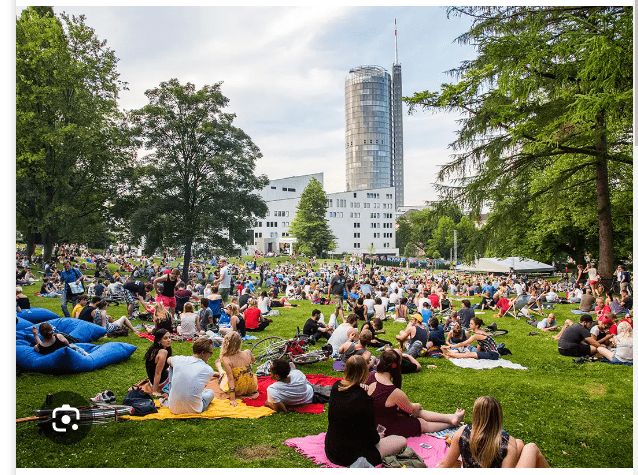
Lead exposure continues to be a significant public health concern, particularly in urban areas with a history of industrial activities and older housing stock. Lead exposure can harm human health, especially for children who are more vulnerable to its toxic effects. Researchers and policymakers have been exploring various strategies to mitigate lead exposure and promote healthier environments in recent years. One potential solution gaining attention is the role of greenspaces in reducing lead exposure. A new study is now underway to investigate the effectiveness of greenspaces in mitigating lead exposure and its potential implications for public health.
The Link Between Greenspaces and Lead Exposure:
Greenspaces, including parks, gardens, and urban forests, have long been recognized for their positive impact on mental health, community well-being, and physical activity. However, recent studies have also indicated that greenspaces may play a crucial role in mitigating environmental hazards, including lead exposure. Several mechanisms contribute to the potential protective effect of greenspaces against lead exposure:
- Soil Remediation: Greenspaces often involve the restoration of soil through techniques such as phytoremediation, which uses plants to extract or break down contaminants like lead. This process can help reduce the bioavailability of lead in soil and limit its uptake by plants.
2. Dust and Air Filtration: Vegetation in greenspaces can act as natural filters, trapping airborne particles and dust, including lead particles. This can prevent the dispersion of lead-contaminated dust into the surrounding environment.
3. Behavior Modification: Greenspaces provide alternative play and recreation areas for children, diverting their activities from potentially lead-contaminated environments. By encouraging outdoor activities in greenspaces, the risk of direct contact with lead-contaminated soil or dust can be minimized.
The New Study: Investigating the Impact of Greenspaces on Lead Exposure
To delve deeper into the potential benefits of greenspaces in mitigating lead exposure, a new study is being conducted by a team of researchers from renowned universities and public health institutions. The study aims to explore the following key aspects:
- Lead Levels in Greenspaces: The researchers will assess the lead levels in soils within various greenspaces, including parks, community gardens, and urban forests. This analysis will help determine the extent of lead contamination in these areas and identify potential hotspots.
2. Greenspaces as Protective Barriers: By comparing lead levels in greenspaces with nearby areas lacking greenspaces, the study will examine whether greenspaces act as protective barriers, reducing lead exposure in their vicinity.
3. Green Infrastructure: The study will evaluate the impact of green infrastructure, such as street trees and green roofs, on lead exposure reduction. These elements can contribute to air and dust filtration, potentially lowering lead levels in the surrounding environment.
Community Engagement and Health Outcomes: The researchers will engage with local communities to gather insights on the perceived benefits of greenspaces and their potential impact on residents’ health outcomes. This qualitative data will complement the quantitative measurements and provide a holistic understanding of the study area.
Implications for Public Health and Urban Planning:
If the study demonstrates a significant association between greenspaces and reduced lead exposure, it could have significant implications for public health and urban planning strategies. The findings may inform the development of targeted interventions, such as increasing greenspace accessibility in neighborhoods with high lead exposure risks or incorporating green infrastructure in urban planning to mitigate lead contamination. Moreover, the study could provide evidence to support the integration of greenspace development initiatives in lead abatement programs and public health policies.
Conclusion:
The potential of greenspaces in mitigating lead exposure represents an exciting avenue for further exploration. The ongoing study aims to shed light on the role of greenspaces in reducing lead exposure and its implications for public health. If the findings demonstrate a positive correlation, this research could pave the way for innovative strategies to address lead exposure and create healthier, more sustainable communities. As cities grapple with the challenges of lead contamination, greenspaces may emerge as a vital component of comprehensive efforts to protect human health and promote environmental well-being.
Reference Link: https://www.cdc.gov/niosh/topics/lead/preventconstruction.html
